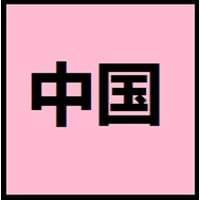Estonian vs Chinese
Countries
Estonia, European Union
China, Hong Kong, Macau, Singapore, Taiwan
National Language
Estonia, Gambia
China, Taiwan
Second Language
Not spoken in any of the countries
Republic of Brazil
Speaking Continents
Europe
Asia
Minority Language
Denmark, Russia, Sweden
Indonesia, Malaysia
Regulated By
Institute of the Estonian Language
Chinese Language Standardization Council, National Commission on Language and Script Work, Promote Mandarin Council
Interesting Facts
- Estonian language is considered to be powerful symbol of Estonian identity and culture.
- Estonian language has adopted many words with Finnish language.
- Chinese language is tonal, since meaning of a word changes according to its tone.
- In Chinese language, there is no grammatical distinction between singular or plural, no declination of verbs according to tense, mood and aspect.
Similar To
Finnish
Not Available
Derived From
Not Available
Not Available
Alphabets in
Estonian-Alphabets.jpg#200
Chinese.jpg#200
Scripts
Latin
Chinese Characters and derivatives
Writing Direction
Left-To-Right, Horizontal
Left-To-Right, Horizontal, Top-To-Bottom
Thank You
aitäh
谢谢 (Xièxiè)
How Are You?
kuidas sul läheb
你好吗? (Nǐ hǎo ma?)
Good Night
Head ööd
晚安 (Wǎn'ān)
Good Evening
Tere õhtust
晚上好 (Wǎnshàng hǎo)
Good Afternoon
Tere päevast
下午好 (Xiàwǔ hǎo)
Good Morning
Tere hommikust
早安 (Zǎo ān)
Sorry
Vabandust
遗憾 (Yíhàn)
Bye
Head aega
再见 (Zàijiàn)
I Love You
ma armastan sind
我爱你 (Wǒ ài nǐ)
Excuse Me
Vabandage
劳驾 (Láojià)
Dialect 1
Keskmurre
Mandarin
Where They Speak
Gabon, Northeastern coast of Estonia
China, Malaysia, Singapore, Taiwan
How Many People Speak
Not Available
Where They Speak
Georgia, South Estonia
China, United States of America
How Many People Speak
Not Available
Where They Speak
France, Northwestern shore of Lake Peipsi.
China, Malaysia, Singapore, Vietnam
How Many People Speak
Not Available
Speaking Population
Not Available
Second Language Speakers
Not Available
Native Name
eesti keel
中文 (zhōngwén)
Alternative Names
Eesti keel
Not Available
French Name
estonien
chinois
German Name
Estnisch
Chinesisch
Pronunciation
Not Available
Not Available
Origin
13th century
1250 BC
Language Family
Uralic Family
Sino-Tibetan Family
Subgroup
Finno-Ugric
Not Available
Branch
Finnic
Not Available
Early Forms
No early forms
No early forms
Standard Forms
Estonian
Standard Chinese
Language Position
Not Available
Signed Forms
Estonian Sign Language
Wenfa Shouyu 文法手語 ("Grammatical Sign Language", Signed Mandarin (Taiwan))
Scope
Macrolanguage
Individual
ISO 639 6
Not Available
Not Available
Glottocode
esto1258
sini1245
Linguasphere
No data available
79-AAA
Language Type
Living
Living
Language Linguistic Typology
Subject-Verb-Object
Subject-Verb-Object
Language Morphological Typology
Agglutinative
Analytic, Isolating
Estonian and Chinese Language History
Comparison of Estonian vs Chinese language history gives us differences between origin of Estonian and Chinese language. History of Estonian language states that this language originated in 13th century whereas history of Chinese language states that this language originated in 1250 BC. Family of the language also forms a part of history of that language. More on language families of these languages can be found out on Estonian and Chinese Language History.
Estonian and Chinese Greetings
People around the world use different languages to interact with each other. Even if we cannot communicate fluently in any language, it will always be beneficial to know about some of the common greetings or phrases from that language. This is where Estonian and Chinese greetings helps you to understand basic phrases in Estonian and Chinese language. Estonian word for "Hello" is Tere or Chinese word for "Thank You" is 谢谢 (Xièxiè). Find more of such common Estonian Greetings and Chinese Greetings. These greetings will help you to be more confident when conversing with natives that speak these languages.
Estonian vs Chinese Difficulty
The Estonian vs Chinese difficulty level basically depends on the number of Estonian Alphabets and Chinese Alphabets. Also the number of vowels and consonants in the language plays an important role in deciding the difficulty level of that language. The important points to be considered when we compare Estonian and Chinese are the origin, speaking countries, language family, different greetings, speaking population of these languages. Want to know in Estonian and Chinese, which language is harder to learn? Time required to learn Estonian is 44 weeks while to learn Chinese time required is 88 weeks.





